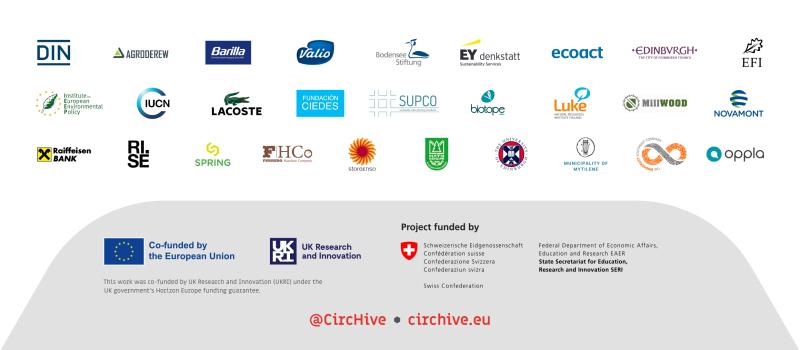Luke and Partners help Businesses and Communities navigate Biodiversity Impact Assessment
For a business to reduce its negative and enhance its positive biodiversity impacts, it must first be able to measure them. But how? That’s the question the Natural Resources Institute Finland (Luke) is exploring as it coordinates the CircHive project – a research initiative with 27 partner organizations across Europe.
Biodiversity impact assessment has gained growing attention in recent years, especially since the EU put forward mandatory and voluntary sustainability reporting standards for companies and financial institutions.
"Through voluntary sustainability reporting, the forerunner companies want to proactively improve their operations to pursue a competitive advantage," says Erika Winquist, Senior Scientist at Luke. She leads the CircHive project, which aims to help businesses and other organizations identify, measure, and report their biodiversity impacts.
A Decision Tree – Helping to Choose the Right Methods
Launched at the end of 2022, the five-year project has tested existing methods in various applications. These methods were typically developed either as part of Life Cycle Assessment (LCA) or Natural Capital Accounting (NCA), and they have not been linked together. According to Winquist, this is the core challenge in impact assessment.
LCA measures factors that affect the state of the environment, such as land use change, direct use of natural resources and greenhouse gas emissions. These so-called drivers are then used to model changes in the state of the environment.
“LCA is a good tool when you want to examine the environmental impacts of the entire value chain and identify the environmental impact hotspots, but it does not measure directly the actual state of nature or changes in it. NCA, in turn, always assesses the state of an ecosystem in a real geographical location.”
CircHive’s unique goal is to integrate the approaches of LCA and NCA in measuring biodiversity impact. To that end, Luke invited top European experts from both fields to join the project.”
“We plan to publish a decision tree by the end of this year – a guidance to help businesses, cities and other entities to choose the most suitable combination of methods. We won’t prioritize the methods, because different methods and sometimes also their combinations are suited to different situations. For example, a single sawmill may want highly detailed information about the origin of timber, while a financier reviewing a broad range of companies may need a more general overview.”
Corporate Partners Testing the Methods
The project focuses on the forest industry, agriculture and food industry, finance, and cities. These sectors are represented by nine businesses and three cities, alongside 16 research partners.
For example, the Finnish dairy company Valio is comparing the biodiversity impacts of conventional and organic farming in milk production.
“Simply focusing on land use, makes it easy to criticize organic farming for requiring more land than conventional farming. In the CircHive project the aim is to take into account more comprehensively, for example, the positive effects of grazing, as well as the use of fertilizers and plant protection agents in accordance with organic farming criteria. We have taken the initiative to examine these complex issues,” Winquist says.
The Italian food company Barilla has taken steps to support biodiversity by encouraging its farmers to add flower strips to wheat fields.
“Through the piloting, we could show positive impacts of this practice. In addition, we found out that biodiversity could be enhanced even further by looking for means to connect forest patches around fields into nature corridors at the landscape level.”
To help spread good practices, the project has established the BEEHive community. On its online forum, researchers share the latest findings, and business and city representatives can exchange views and experiences. Now, others interested in the topic beyond the project are also welcome to join.
Who is leading the project?
Text: Marianna Salin



